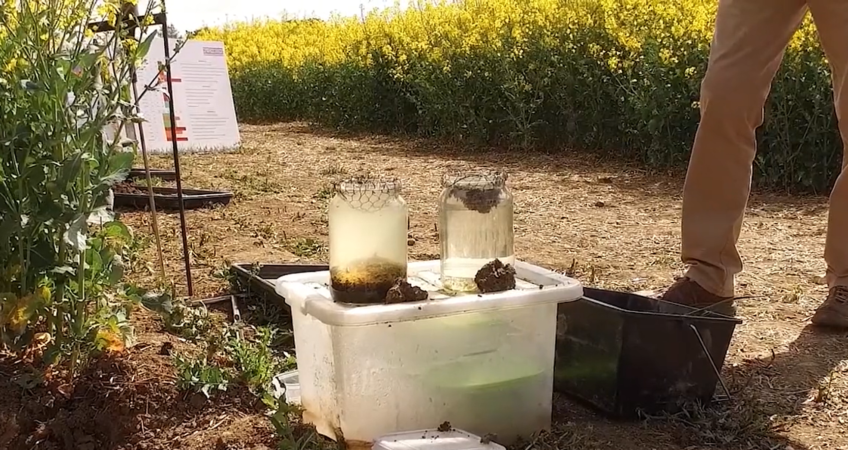
At this year’s Claydon open days, we hosted a talk by Dick Neale, Technical Manager, from crop production specialists Hutchinsons. Claydon took the opportunity to open up their soils by digging a soil pit 4m x 2.5m in one of their fields which has had no deep cultivations for 16 years. We wanted to assess the condition of our soil to depth and show our visitors the benefits of the Opti-Till® system. Dick spent most of the three days in the soil pit talking about soil health and soil structure. He explained the importance of ensuring that your soils are balanced with a good pH, that trace elements are at their optimum and soil structure is good. As part of this assessment, Dick conducted a slake test which helps assess the health and resilience of soil. A sample of soil from the pit was used which was compared with a soil sample from a conventionally cultivated nearby farm.
Slaking occurs when aggregates are not strong enough to withstand internal stresses caused by rapid water uptake. Specific problems that might be caused by poor function: slaked soil particles block soil pores, form a soil crust, reduce infiltration and water movement through soil, and increase runoff and erosion. Slaking indicates the instability of soil aggregates, propensity to erode and suggests how soil loses its structure and its ability to provide water and air for plants and soil biota when it is rapidly wetted. Limited slaking suggests that organic matter is present in soil to help bind soil particles and microaggregates into larger, stable aggregates.
To find out what happened in the Claydon slake test, click here.



